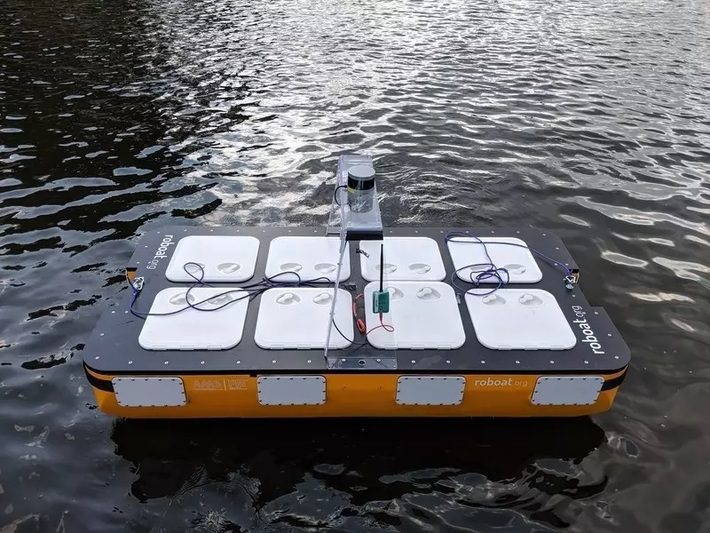
In the post-AI and the future of autonomous systems, we saw that AI driven autonomous systems may take off independently of autonomous cars.
Roboat from Amsterdam is one example of the shape of things to come.
In essence, as the name implies, Roboat is a set of boats that navigate the Amsterdam canals using algorithms similar to self-driving cars but adapted for use in water.
The idea of Roboat itself is not new.
But the idea seems to have evolved a lot since I first saw it – especially in its capacity to carry passengers (in addition to Cargo)
Here are some characteristics of Roboat
- The system is now advanced in accuracy. Roboat II autonomously navigated the canals of Amsterdam for three hours collecting data and returned back to its start location with an error margin of only 0.17 meters, or fewer than 7 inches.
- There are now advanced navigation and control algorithms for communication and collaboration between boats. The system is modeled on an ant colony using a distributed controller. In this model, there is no direct communication among the connected robots — only one leader knows the destination. The leader initiates movement to the destination, and then the other robots align their movements accordingly by estimating the intention of the leader
- Greater levels of autonomy: New algorithms like Simultaneous Localization and Mapping (SLAM),a model-based optimal controller called nonlinear model predictive controller, and an optimization-based state estimator, called moving horizon estimation provide greater levels of autonomy. These algorithms help the system to
- dynamically assign a new passenger request to an unoccupied boat that’s closest to the passenger.
- Help the Roboat II system to create a feasible path to the desired destination based on the current traffic conditions.
To do this, Roboat II needs to localize itself through the SLAM algorithm, lidar, GPS sensors and other data. The distributed controller then tracks the reference trajectories from the planner, which updates the path dynamically to avoid obstacles and collisions.
To conclude, the capabilities of Robot can be applied to many autonomous systems in a specific context – ex a group of autonomous drones monitoring a construction site
More technical details in a paper published about Roboat
Source world economic forum
Images source: Image: MIT CSAIL world economic forum
